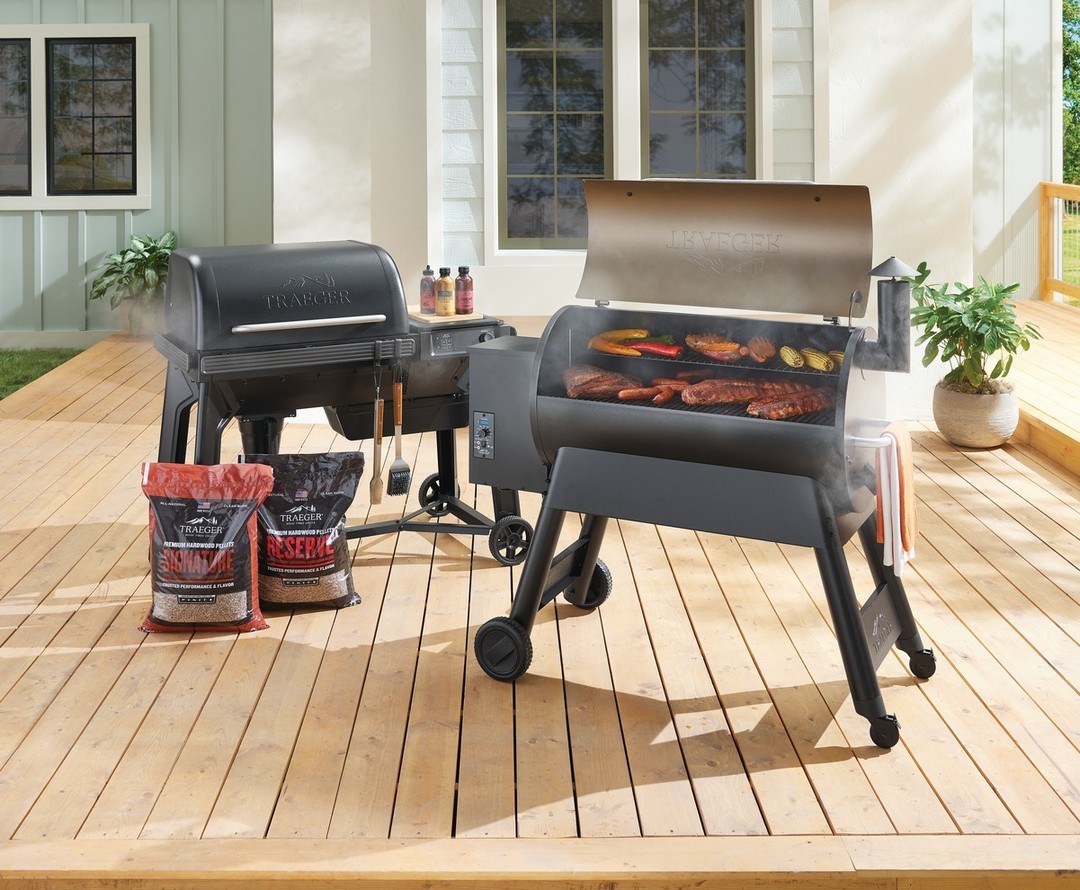If you’ve ever flipped burgers on a gas grill and thought, “I wish this had more smoke, but also more control,” then wood pellet grills are probably your spirit animal.
As a pitmaster who’s spent more sunsets over smoky grates than I care to admit, I can confidently say: wood pellet grills are the versatile, “set‑it‑and-forget-it” tool every backyard chef needs.
Why are they trending? Because they bridge the gap between a traditional smoker and a high-heat grill.
With one of these, you can smoke ribs low and slow, roast a chicken, bake a pizza, or crank it up for a reverse-seared steak – all in the same hopper.
But with so many options out there, choosing the right wood pellet grill can feel like navigating a pellet maze.
In this article, I’ll walk you through what to look for, review the top-rated wood pellet grills, and help you decide which one makes sense for your style, space, and budget. Think of me as your grilling co-pilot – minus the extra apron.
What Is a Wood Pellet Grill?
Before we dive into products, let’s level-set:
- How it works: You load hardwood pellets into a hopper. An auger feeds them into a firepot. An electric igniter lights the pellets, and a fan regulates airflow. The result? Convection cooking with real wood smoke.
- Why it’s great:
o Consistent temperature control – better than coal, more “wood-fired” than gas.
o Flavor versatility – use different pellet types (hickory, apple, mesquite) to change the smoke profile.
o Multifunctional cooking – smoke, roast, grill, bake, braise, even sear (on the right model).
- Limitations: Needs electricity. Pellet quality matters. And not all pellet grills reach extremely high searing temps (depends on the model).
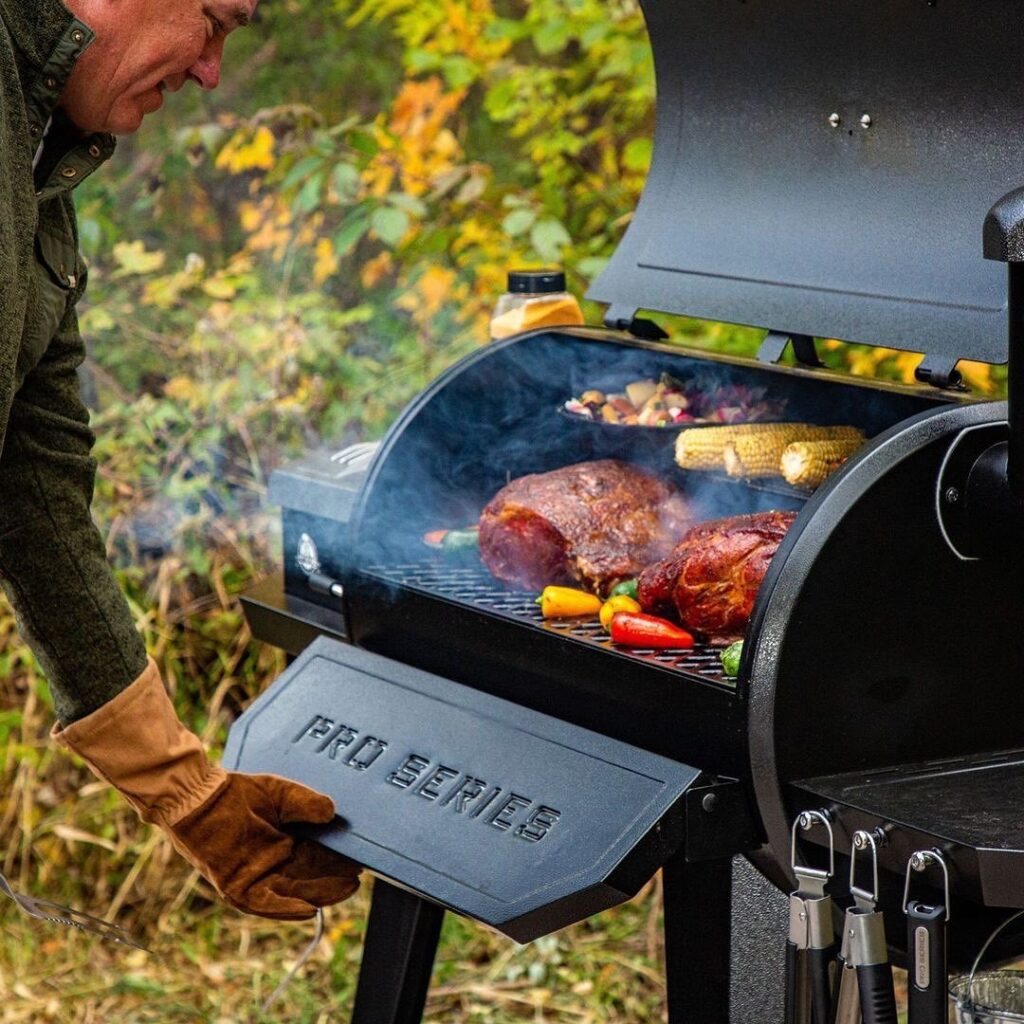
How to Choose the Right Wood Pellet Grill
Picking the perfect pellet grill comes down to matching your needs. Here are the key factors you should consider:
- Cooking area / capacity: How many people are you feeding? A 500 sq in grill is great for family dinners; 1,000+ sq in is for parties and big cuts.
- Temperature range & control: A) Do you want to smoke low (around 180°F) or sear high (500°F+)? B) Look for quality controllers: PID, Wi‑Fi, or app‑enabled.
- Build quality & materials: Steel thickness, lid design, and construction quality affects heat retention and durability.
- Portability vs. stationary: Some are compact and light. Others are heavy-duty fixtures.
- Features & extras: Hopper clean-out, ash management, meat probes, side shelves, casters.
- Budget: Entry-level vs. premium. Bigger name = more cost, but not always better for your needs.
- Warranty & support: Brands like Traeger, Weber, and Yoder have strong support; others, less so.
Top-Rated Wood Pellet Grills
Here are six of the top-rated wood pellet grills on the market, reviewed from the perspective of a seasoned pitmaster. (Yes, I weighed the pros, cons, and real-world cookability.)
Here are the top picks and my take on them:

1. Traeger Woodridge
The Traeger Woodridge is a reliable entry-level wood pellet grill that delivers classic smoky flavor with set‑and‑forget simplicity. Perfect for backyard beginners, it offers consistent heat and a compact design without overwhelming technical controls.
- Key Features: Classic Traeger flavor, set‑and‑forget controller, ~380–450°F range.
- Pros: Reliable, easy to use, compact enough for most patios.
- Cons: No super high sear; basic digital controller (not Wi‑Fi).
- Best For: Beginners or those upgrading from a gas grill.

2. Traeger Ironwood XL
The Traeger Ironwood XL brings serious grilling muscle with its spacious cooking area and dual meat probes, making it ideal for entertaining or feeding a large family.
With its insulated lid and precise temperature control, this grill gives you Traeger’s signature wood-fired flavor without compromise.
- Key Features: Large footprint, dual meat probes, improved insulation.
- Pros: Big cooking area, consistent heat, good for serious grills.
- Cons: Expensive, heavy.
- Best For: Entertainers or families that grill often.

3. Z Grills 459‑sq‑in PID Grill
The Z Grills 459‑sq‑in PID Grill packs serious value into a compact footprint, offering stable temperature control via a PID 3.0 controller that holds heat within ±5 °F.
With an 8-in-1 cooking function and a convenient hopper clean‑out, it’s a versatile pick for everyday use or slow-and-steady smoking.
- Key Features: PID controller for very stable temps, 28-lb hopper.
- Pros: Excellent temp stability, long cook time, strong value.
- Cons: Lacks some premium bells and whistles, slightly lower top heat.
- Best For: Home cooks who want reliable smoking without overspending.

4. Weber Searwood 600
The Weber Searwood 600 is a powerhouse pellet grill that can smoke low or sear high, thanks to its 180°F–600°F range and DirectFlame™ cooking system.
It also comes with Wi‑Fi and Bluetooth connectivity, so you can monitor your cook via the Weber Connect app while you might actually do other things.
- Key Features: Wi-Fi/Bluetooth, high-temp capability, robust build.
- Pros: Searing performance, smart grill connectivity, wide temp range.
- Cons: Pellet consumption can be high, learning curve for app features.
- Best For: Grillers who want both smoke and serious sear.
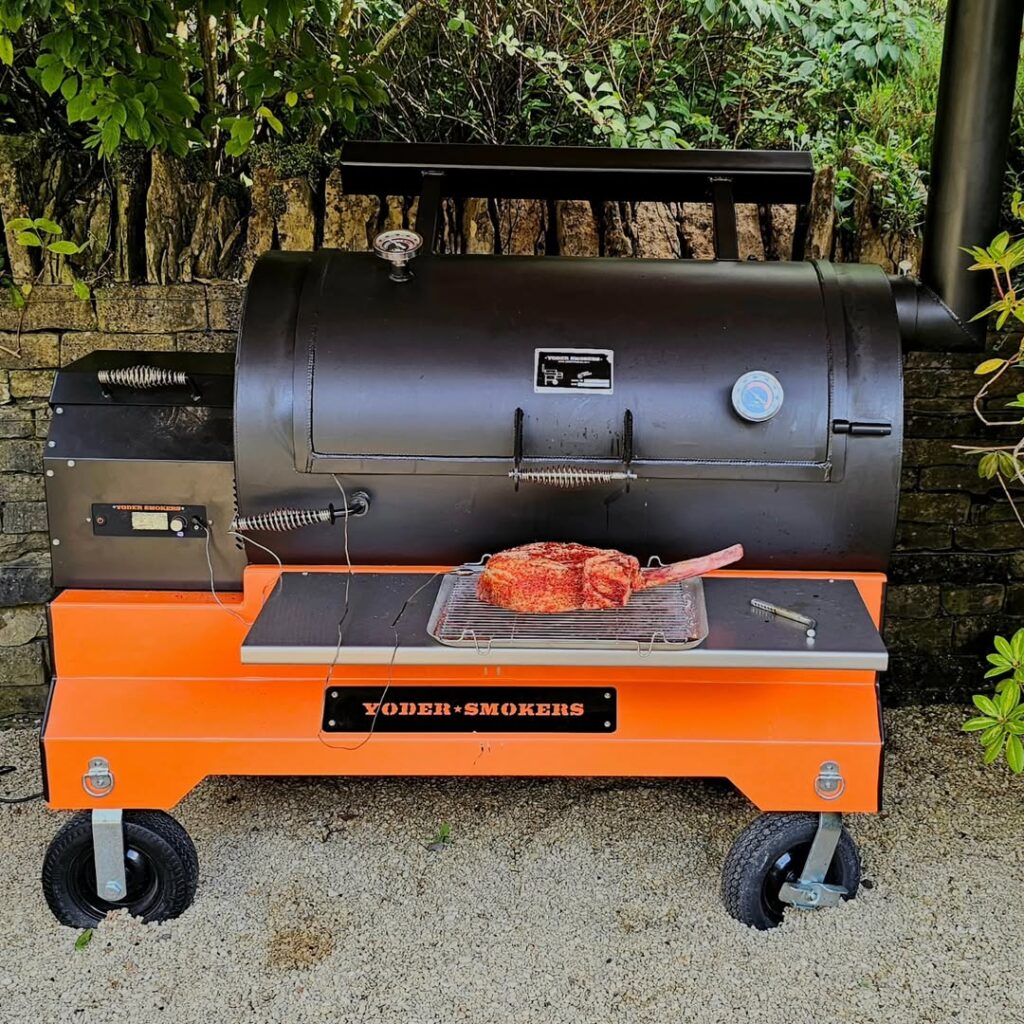
5. Yoder YS1500
The Yoder YS1500 is a beefy, competition-level pellet grill built from thick, 3⁄16-inch steel, delivering a massive 1,500 sq in cooking area for big cuts or high-volume BBQ.
Combine that with its Adaptive Control System (ACS), Wi‑Fi + Bluetooth connectivity, and precise heat‑management plate – and you have a pitmaster’s dream for both low-and-slow smoke and high-temp grilling.
- Key Features: 1,500 sq in cooking space, heavy-duty steel, 20-lb hopper.
- Pros: Built like a tank, excellent for large cuts or commercial use.
- Cons: Very large and heavy, premium price.
- Best For: Dedicated pitmasters or serious weekend cooks.
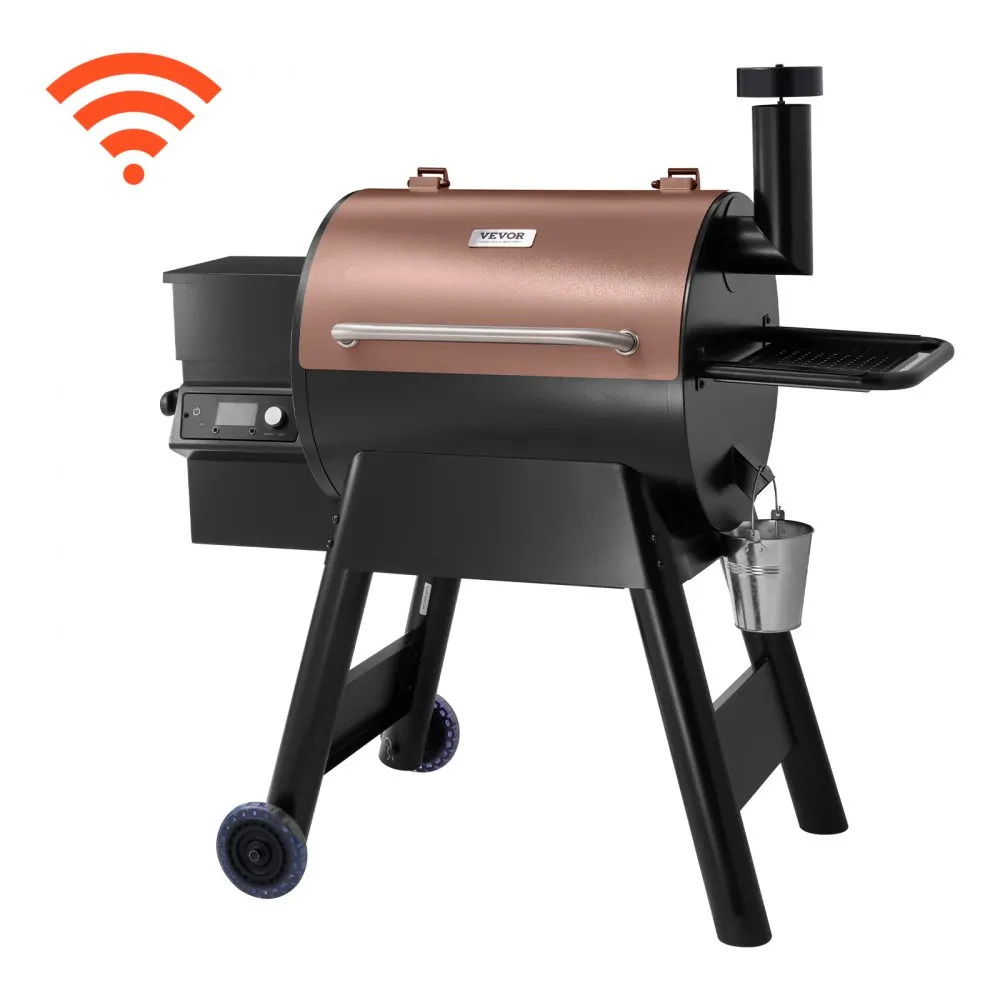
6. VEVOR 8‑in‑1 Wood Pellet Grill
The VEVOR 8‑in‑1 Wood Pellet Grill is a budget-friendly multitasker, blending smoking, grilling, roasting, and baking capabilities in a single compact unit. Ideal for backyard experimenters or first-time pellet grillers, it offers surprising versatility without breaking the bank.
- Key Features: Multi-function (smoke, roast, bake, grill, etc.), affordable.
- Pros: Versatility, budget-friendly, good for experimentation.
- Cons: Less refined controls, lower brand prestige.
- Best For: Beginners wanting to try pellet grilling without a big investment.
In addition to these, let me highlight two other very strong contenders I’ve tested or followed in the pellet world:
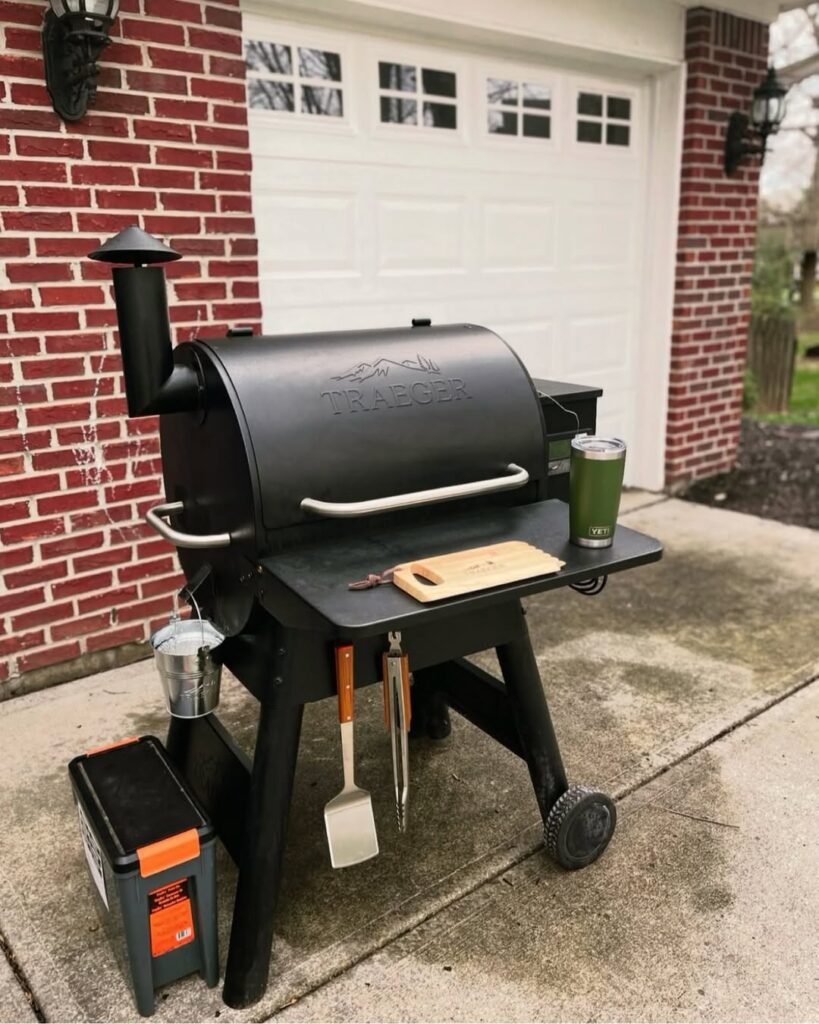
7. Traeger Pro 575
The Traeger Pro 575 packs a spacious 572 sq in cooking area with Wi‑Fi-enabled D2 control, letting you monitor and adjust temps right from your phone. With a 165°F–500°F range and a handy meat probe, it’s versatile enough for slow-smoking brisket or searing steaks.
- Specs: 572 sq in cooking area, 165–500°F range, 18-lb hopper, WiFIRE® control.
- Pros: Remote control via the Traeger app, clean hopper design, solid cooking area.
- Cons: Some users report temp fluctuations and slower heat-up.
- Best For: Grillers who want Traeger reliability and app control.
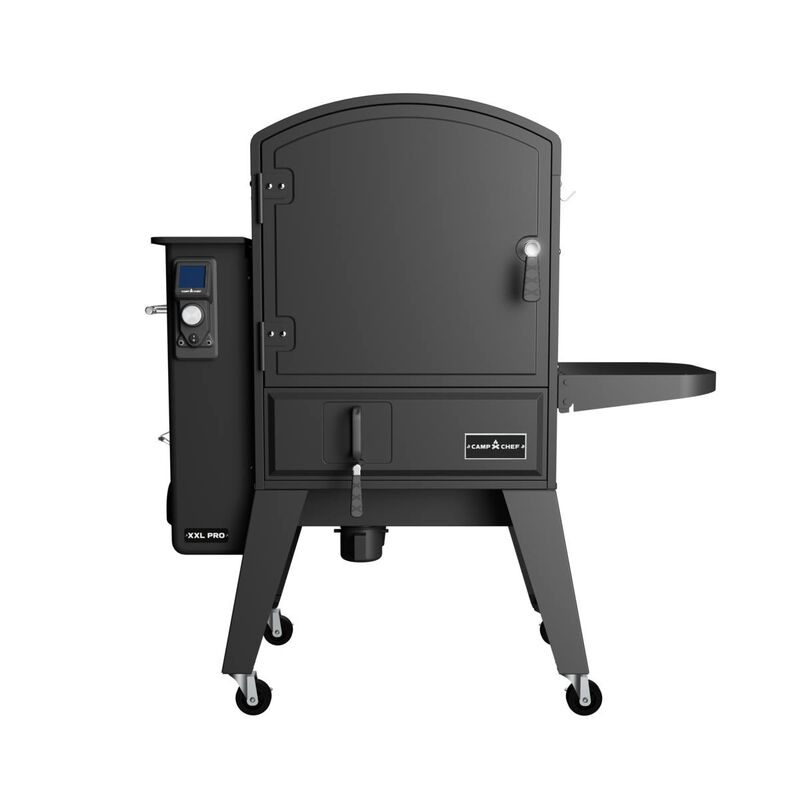
8. Camp Chef SmokePro DLX
The Camp Chef SmokePro DLX is a smart, no-nonsense pellet grill built for consistent, fuss-free smoking – thanks to its PID controller and 160 °F–500 °F range. Its patented ash clean-out system makes cleanup a breeze, letting you pull a lever and dump the ash instead of wrestling with a vacuum bag.
- Specs: 429 sq in primary, 570 sq in with warming rack, 160–500°F range.
- Pros: Ash clean-out system, digital PID-style controller, good for long smokes.
- Cons: Discontinued in some markets; parts may be harder to find.
- Best For: Budget-focused smokers or DIYers who don’t need app control.
Comparison Table
Here’s a side-by-side comparison to help you quickly evaluate:
| Grill Model | Cooking Area | Temp Range | Hopper | Special Feature | Best For |
| Traeger Woodridge | Medium | ~380–450°F | Medium | Set-and-forget control | Beginners |
| Traeger Ironwood XL | Large | 165–500°F | Large | Dual meat probes, insulated | Entertainers |
| Z Grills 459-sq-in PID | Medium | 160–500°F | 28 lb | PID temp stability | Regular smokers |
| Weber Searwood 600 | Large | 200–600°F | 28 lb+ | High heat, Wi-Fi | Sear & smoke combo |
| Yoder YS1500 | Very Large | ~180–500°F+ | 20 lb | Heavy-duty construction | Serious pitmasters |
| VEVOR 8-in-1 | Medium-Small | ~160–450°F | — | Multi-mode functionality | Experimenters |
Tips for Getting the Most Out of Your Wood Pellet Grill
As someone who’s made more “happy accidents” than planned masterpieces, here are tips I’ve picked up:
- Season before first use: Run the grill empty for 30–45 minutes at 350–400°F to burn off manufacturing residues and coat the firepot.
- Choose the right pellets: Go with 100% hardwood (oak, hickory, apple) – avoid cheap heating-grade pellets.
- Clean regularly: Ash buildup kills performance more than bad weather. Empty the firepot, clean grease, and vacuum pellet dust if needed.
- Use the controller or app wisely: Don’t just crank the temp. Open the lid, check, and let it recover. Good controllers (like PID) can handle small lid lifts.
- Manage pellet swaps: When changing wood flavors, use the hopper clean-out feature if available – no need to manually dump.

Frequently Asked Questions
Here are common questions people (and fellow pitmasters) ask before buying:
Q1: Can a pellet grill really sear like a gas or charcoal grill?
Yes – but it depends on the model. Grills like the Weber Searwood 600 go up to ~600°F, which allows decent searing. Simpler models may struggle to match a dedicated charcoal or gas sear.
Q2: How long do pellets last in the hopper?
That depends on the hopper size. A 20-lb hopper can run 20+ hours on low-smoke, or far less under high heat and heavy use.
Q3: Is Wi-Fi or app control worth it?
If you’re doing long smokes or like remote monitoring, yes. If you’re just grilling in the evening, a basic digital controller works well.
Q4: Are pellet grills safe in all weather?
Mostly. They need a stable power source and dry pellets. Strong rain or humidity can clog pellets. Use a cover – and you’ll be fine.
Q5: How long do good pellet grills last?
With proper maintenance, 5–10 years is realistic. Premium units like Yoder can go even longer thanks to their heavy build and quality parts.
Final Verdict & Recommendations
Here’s my pitmaster’s pick based on different scenarios:
- Best for beginners:Traeger Woodridge. Simple, reliable, and lets you learn the game.
- Best for large families or entertainment:Traeger Ironwood XL or Yoder YS1500 – lots of space and robust builds.
- Best value for consistent smoking:Z Grills 459-sq-in PID Grill. Excellent temp control without breaking the bank.
- Best hybrid (sear + smoke):Weber Searwood 600 – it sears hot, but still smokes great.
- Best budget versatile pick:VEVOR 8-in-1 – cooks many ways for less.
Fire and Brimstone in a Box
If you’re serious about wood pellet grills, this is your moment. These machines bring real wood flavor, set-it-and-forget-it convenience, and more cooking flexibility than most backyard setups. But picking the right one comes down to what you value most:
- Do you want simplicity or smart control?
- Do you cook for one or many?
- Is searing a must, or will slow-smoking satisfy you?
No matter which of the top-rated grills you go with, stick to good pellets, clean smart, and treat your grill like the loyal knife it is – not a dumpster fire in waiting.
Do that, and your pellet grill will reward you with smoky, juicy, unforgettable food for years.
Now go ignite the auger, fire up the flavor, and enjoy some serious wood-fired cooking. Your pitmaster future awaits.
Featured image credit: @rockysacehardware

